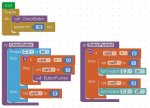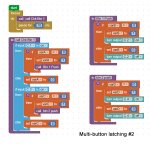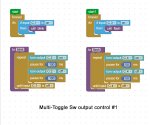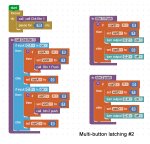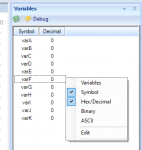Ed Straker
Active member
I'm still very much in the early learning stages with Picaxe, as such, I am using Blockly for visual learning so I can see the relationship between Block and actual code.
With that said, here is my issue:
Trying to figure out how to get a momentary push button detection on the 08M2 (I assume it would be the same with any Picaxe)
Power up -> do nothing ->first btn push -> turn on pinX -> next btn push -> turn off pinX.
(all actions from a single button)
A Blockly solution would be most helpful at this point if at all possible so I can continue to build on from there.
Thanks for any help you folks can provide.
With that said, here is my issue:
Trying to figure out how to get a momentary push button detection on the 08M2 (I assume it would be the same with any Picaxe)
Power up -> do nothing ->first btn push -> turn on pinX -> next btn push -> turn off pinX.
(all actions from a single button)
A Blockly solution would be most helpful at this point if at all possible so I can continue to build on from there.
Thanks for any help you folks can provide.


